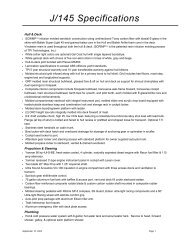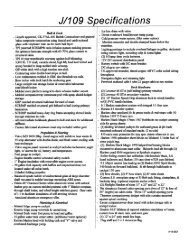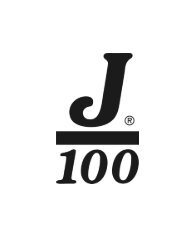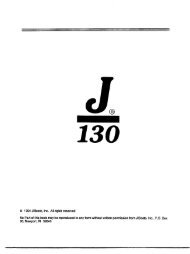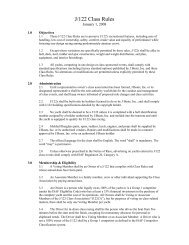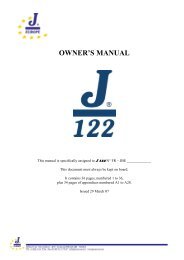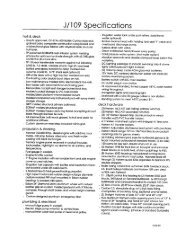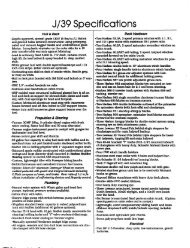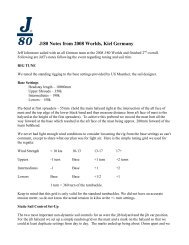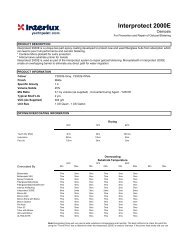J105 Owner Manual 2012.pdf - J/Owners
J105 Owner Manual 2012.pdf - J/Owners
J105 Owner Manual 2012.pdf - J/Owners
Create successful ePaper yourself
Turn your PDF publications into a flip-book with our unique Google optimized e-Paper software.
J/105 <strong>Owner</strong> Guide ...................................................................................................................................................................................................................................................... 40 <br />
Zincs <br />
The shaft zinc should be inspected for integrity. If it is severely pitted, replace it immediately. <br />
Remember it is a sacrificial anode to protect the propeller and shaft from electrolysis. It can <br />
deteriorate quickly, so inspect it frequently particularly if in a known “active” harbor. The split <br />
design allows replacement while the boat is in the water. Unusually rapid zinc deterioration may <br />
be a sign of other electrical problems. Proper inspection and immediate corrective action should <br />
be taken to identify and isolate the source of electrical current. Failure to do so may lead to <br />
damage of the propeller and shaft. <br />
Deck Hardware/Running Rigging <br />
Wash deck hardware frequently with fresh water to remove accumulated salt and grime. Salt is <br />
VERY corrosive and a healthy wash down after each day of use will help keep things looking <br />
great. Regularly wash down the jib sheets, spinnaker sheets, and other lines in fresh water. <br />
Check for chafe and turn non-‐tapered sheets end-‐for-‐end once every year to more equally <br />
distribute wear. <br />
Check all deck blocks and also wash them with fresh water. Most ball-‐bearing blocks need only <br />
hot water to cleanse them. On conventional sheave/pin blocks, wash off, disassemble, clean, rub <br />
a light waterproof lubricant on the center pin, and then reassemble. Use only lubricants as <br />
recommended by hardware manufacturers. <br />
Furthermore, check and lubricate the sheaves and blocks on the mast. Also, ensure the <br />
turnbuckles are clean and well lubricated. Without proper care they can “freeze up”. <br />
In general, it is handy to keep a spray can of an appropriate light lubricant in your tool kit for <br />
frequent squirts of blocks, shackles, mainsheet travelers, and other moving fittings. <br />
Winches & Rope Clutches <br />
Read the manufacturer’s manuals on winch and rope clutch maintenance. Winches are fine <br />
pieces of machinery that for the most part take little effort to maintain. However, all too <br />
frequently, they suffer neglect because no one can see how much they wear down or get dirty. <br />
Clean And Lubricate Them! It takes little time to disassemble and put back together. Note that <br />
the gears and bearings are lubricated with special winch grease. Pawls and pawl springs need <br />
only a light oil. Keep spare pawls and springs in a kit for replacement. <br />
Deck Hatch <br />
Hatches need lubrication of their hinges with a silicone grease once a year. Also check the seals <br />
to see they are not unduly cracked, or are losing their ability to seal correctly. To increase <br />
traction on the plastic hatch covers, some owners prefer to apply non-‐skid tape. The foredeck <br />
hatch seals and hinges can see the quickest wear especially if the spinnaker is being actively <br />
hoisted and doused through this hatch. If you like to leave the spinnaker tack line, sheets and <br />
halyard rigged to the spinnaker while it is below, it is better to use the “vent” setting while <br />
dogging the hatch to reduce torque on the frame and reduce potential for premature problems.



